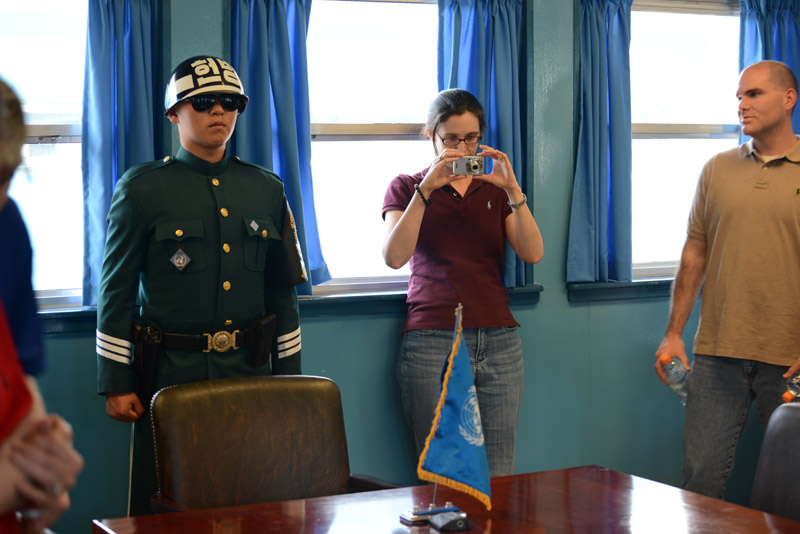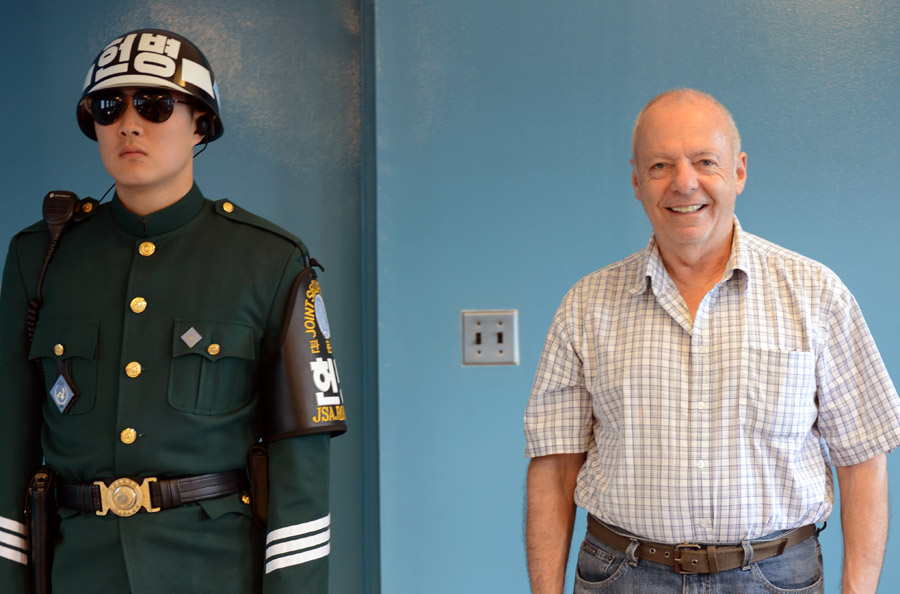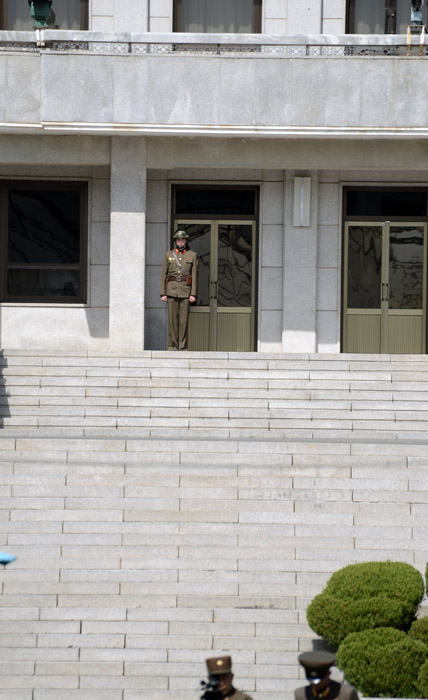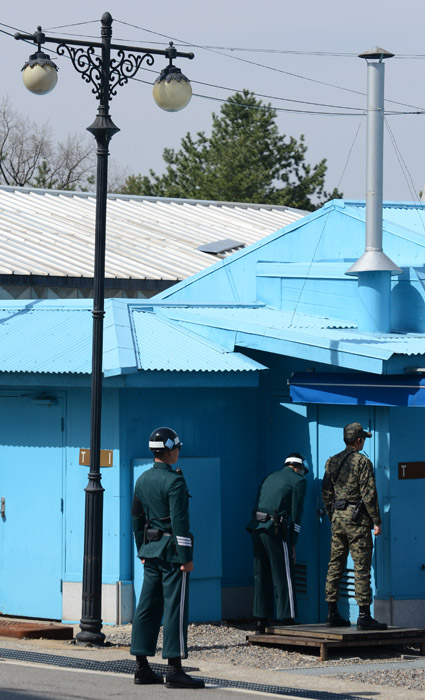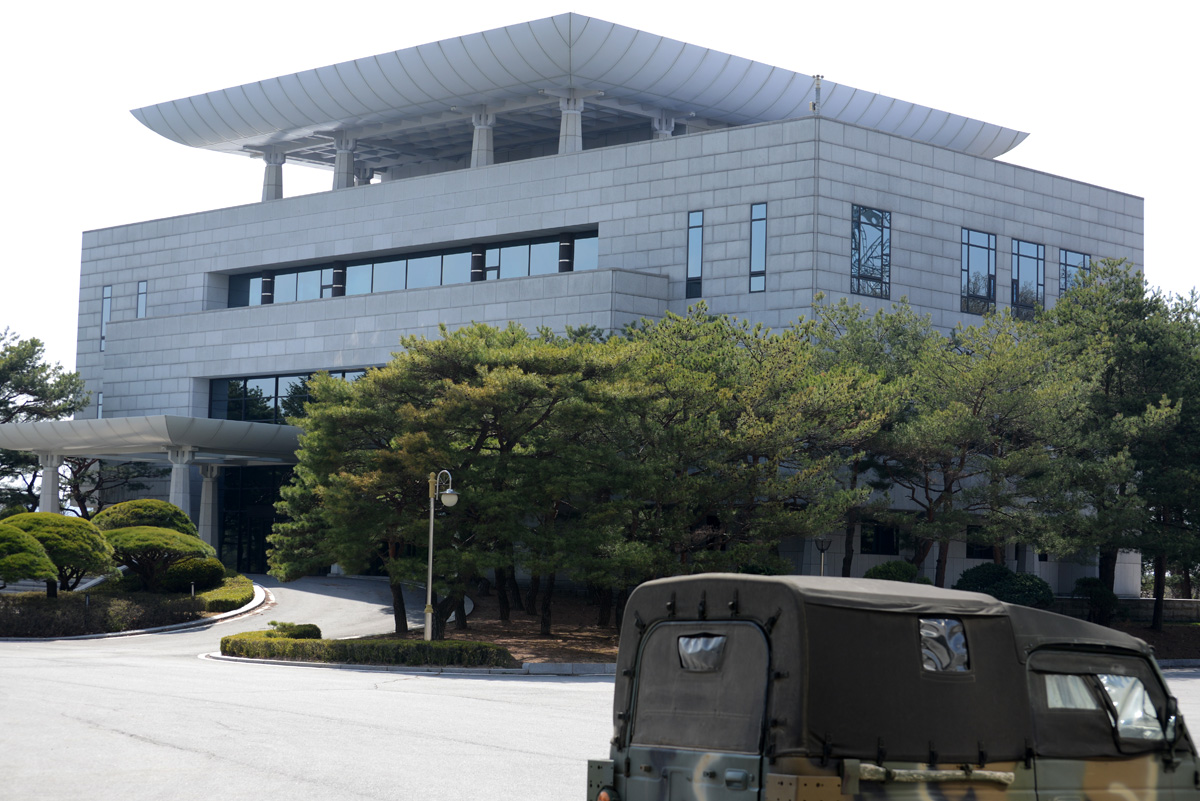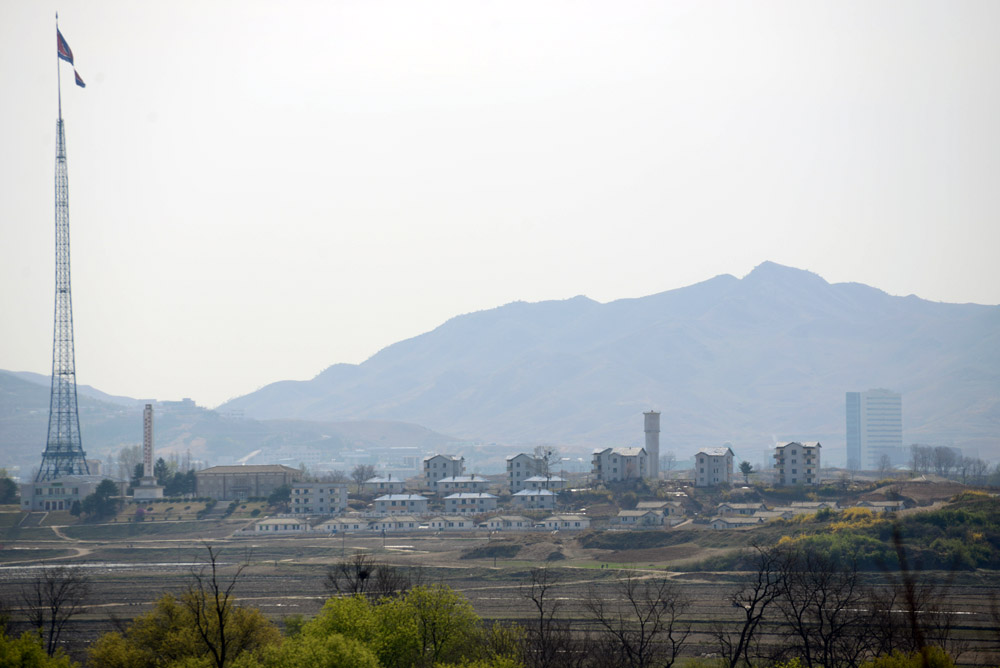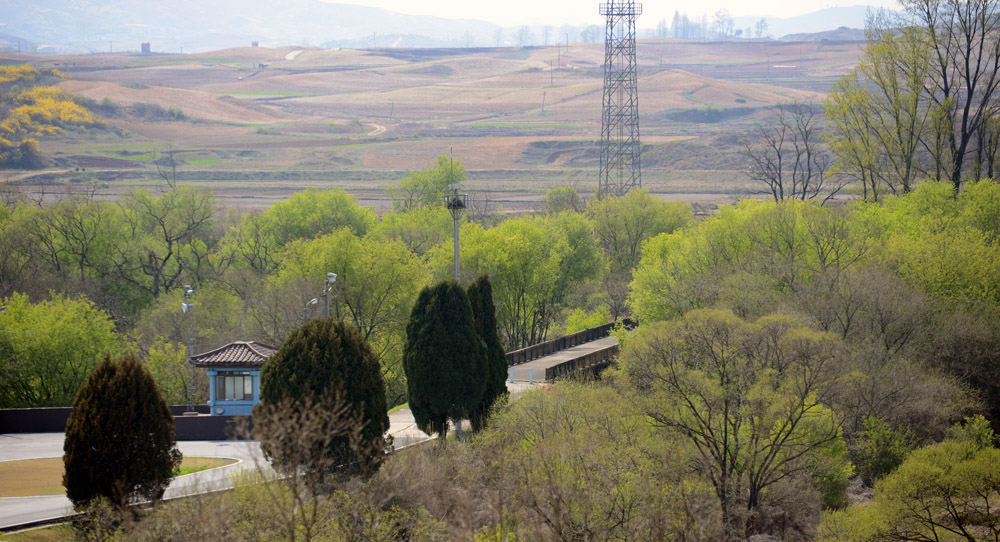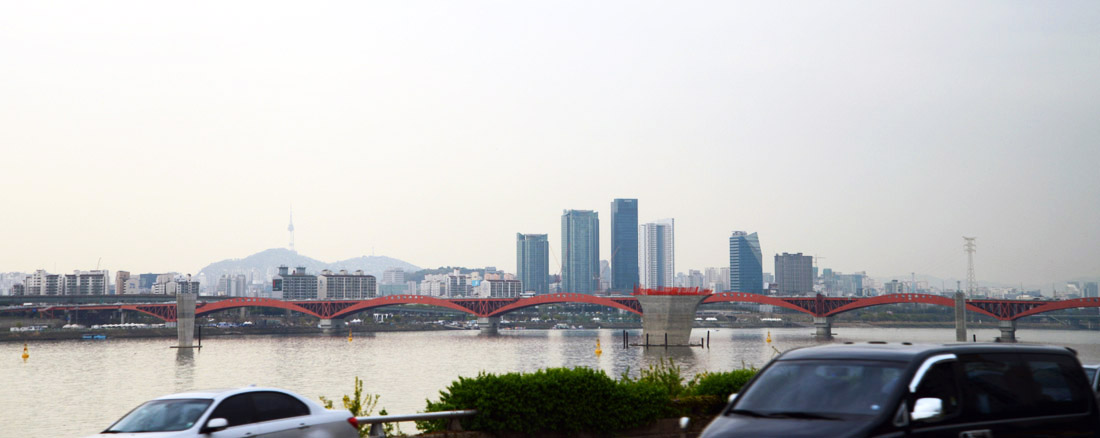What we are looking at is one of two villages that are permitted to be located within the DMZ. The one in the south, called the Freedom Village, is staffed by South Korean farmers and their help. A lot of South Koreans pay exrta to get the produce from here. Those who opt to stay there, are doing very well, but have a curfew and have to have their homes locked tight by some late hour. Some of them are well-to-do absentee owners. The school there is outstanding, btw. It has 11 teachers and about the same number of students. On the other hand, this picture shows the North Korean village they call Peace Village. However, since no one lives there, most of the windows are painted on, and the houses are largely empty shells with no floors, the West calls this the Propaganda Village. It's a sham. People get bussed in there at times, and then go back to work in a nearby industrial complex. |



